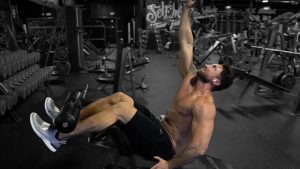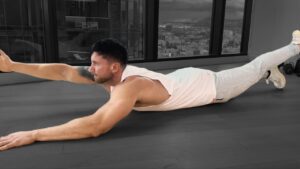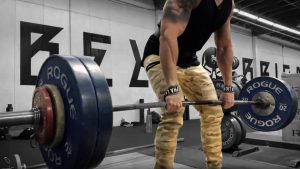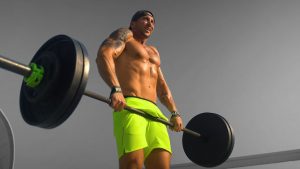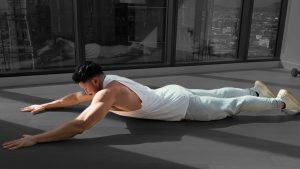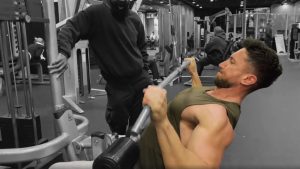When in doubt, get upside down. Well, not quite. Sometimes basic pushups are not what the doctor ordered, and you need to kick it up a notch; that's where decline pushups come in.
Harder than a standard pushup, these were made to target the chest, shoulders, back, and arms on a whole new level. Let's get straight into it.
Ready, set, pushup!
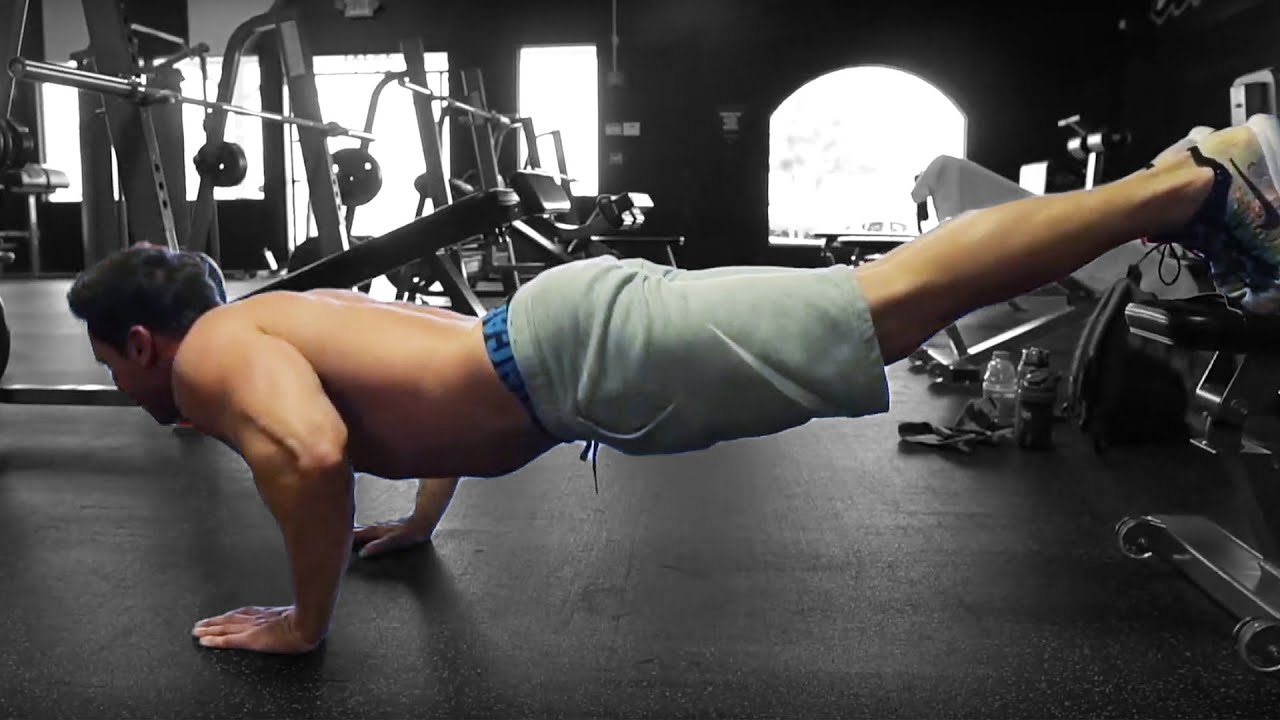
Mechanics: Compound
Force: Push
Aim: 3 sets of 10 - 15 reps if you are scared. For the best results, go until total failure.
- 1Grab a bench, exercise step, or couch that will not move around too much if it moves around back it against a wall for stability.
- 2To get into position, you need to have enough space to lie down in front of the bench. Place your feet on the bench or the couch and arms underneath you in a standard pushup position. Your hands should be shoulder-width apart.
- 3Engage your core and lift your hips; your body should be straight and aligned. Adjust and realign if need be.
- 4With your arms extended, find a spot on the ground and look down. Slowly lower your chest down until it touches the ground.
- 5Engage your muscles, and push your upper body up with explosive strength.
- 6Don't lock your elbows.
- 7Repeat until you feel like tapping out; go for another two or three decline pushups to complete the exercise.
Target Muscles Worked
The reason for the decline pushups' popularity is their simplicity. You can do them anywhere and reap the benefits of targeting all the chest muscles. This compound exercise works a number of muscles in the upper chest and shoulder area.
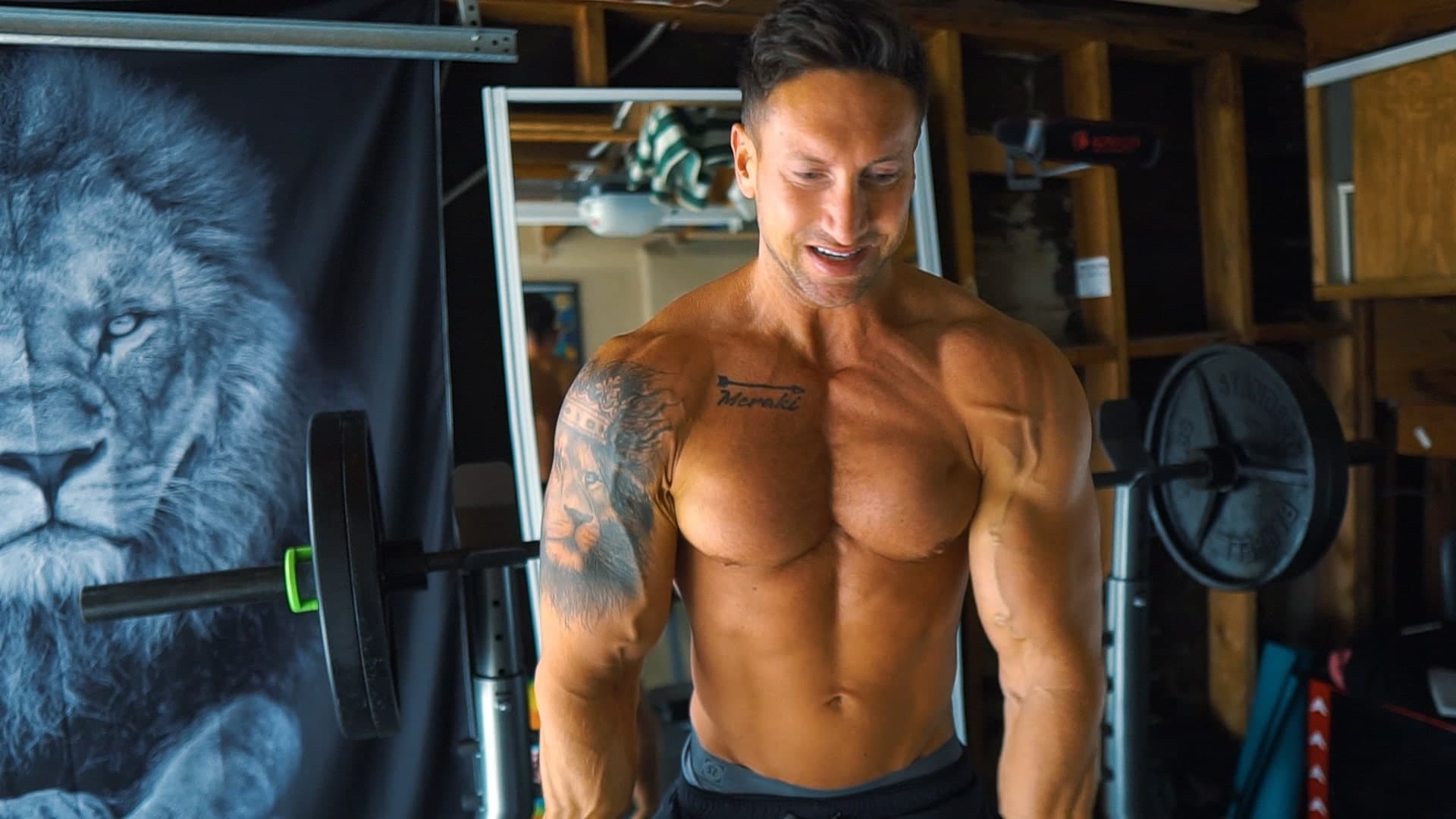
The pectoralis major and minor and the triceps brachii are key target areas when performing this exercise. They form some of the most visible parts of the upper body. Your upper pectoral muscles and clavicular head will benefit from this exercise.
The core muscles are also activated - the abdominals, obliques, and erector spinea are all engaged to stabilize the torso. This stress can help form a more robust and more stable core.
Correct Form
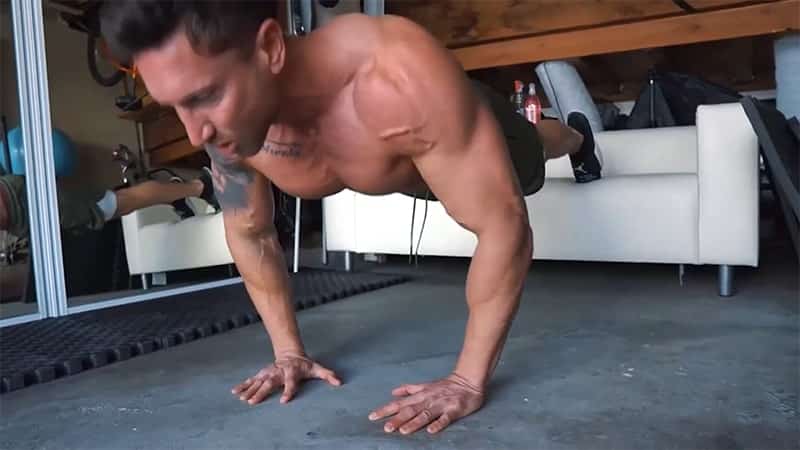
Perfecting your plank form is crucial to getting these right. The execution needs to be perfect. You should be able to maintain a straight arm plank through for you to be able to do this exercise.
Traditional pushups are a requirement before you attempt this exercise. It will prevent you from flaring out and not getting the benefits of the training. Try to get those down before you attempt these.
Mistakes and How to Avoid Them
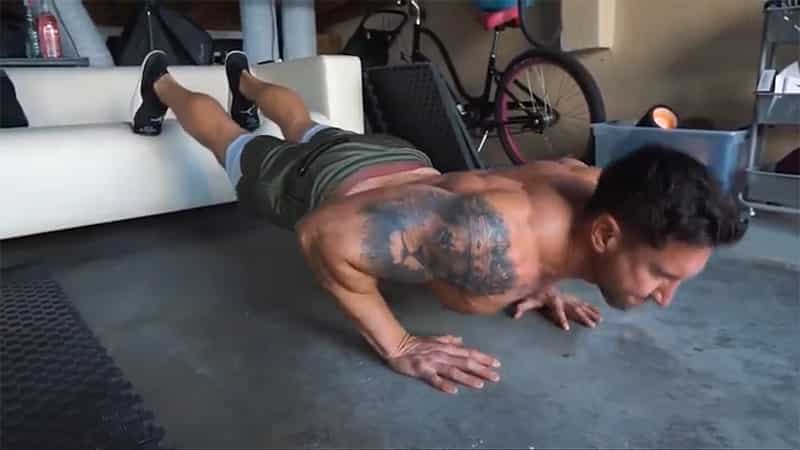
Some people swear against decline pushups; more often than not, that has to do with mistakes in their form and position when performing the exercise.
Understanding how you can troubleshoot these mistakes will help you understand where you are going wrong.
With that information on hand, you can fix those in order to benefit.
Benefits of Decline Pushups
Functional health and fitness skill
Functional strength comes from exercises that help you work muscle groups that you need in everyday life. You use the upper body, core, and arm muscles throughout life, so when you strengthen these areas, your overall quality of life improves with it.
Decline pushups work the functional muscles in the upper body, such as the triceps and pectoral muscles.
Posture correction
Strong cores and shoulders are responsible for healthy posture. That slouched and hunched-over posture that many people have from working at a desk can be corrected with proper exercise and developing the muscles.
You can get your postural muscles activated by pushing your chin into your chest while as you perform this exercise.
Friendly on your joints
A lot of people struggle with shoulder pain and tension in the shoulders; these pushups improve shoulder health and movement. Many lifters will experience joint issues in their shoulder from bench pressing incorrectly or not adding enough movement to the shoulder area.
That is one of the reasons why all lifters should add this to their workouts.
Upperbody strength
How much do you bench? Think of that number, write it down, keep it safe, and add these to your routine if you haven't already. The upper body strength that you get from these decline pushups can improve your overall lifting and performance in other exercises.
Variations
Variety is the spice of life, and the same can be said for exercise; whether you are looking for a challenge or want something a little different, try these variations out.
Quick tips for the best results:
Changing the tempo of your exercise is one of the easiest ways to get a different workout in. Alternate between slow and steady pushes and faster pumps.
Switch it up and superset these with a set of incline pushups between sets.
Up For a Challenge
If you need a bit more of a challenge, try changing the decline. Increasing the height makes this exercise harder. Advanced trainers can even go for a wall pushup. The higher the elevation, the more complex the workout.
Here's how:
- 1Get into a plank position on the ground; your feet should be touching the wall behind you.
- 2Slowly walk your feet up the wall behind you.
- 3Adjust until you are comfortable with the height; the higher you go, the harder the challenge.
- 4Bending your elbows. Begin to lower, chest towards the ground. Keep your core engaged.
- 5Ensure your back is straight and aligned. Do not move your head around to look around the room.
- 6Push back up to the starting position.
- 7Continue for your desired reps or until failure.
Destabilized Decline Pushup
This is a little harder; it places a lot more stress on your core. Grab a stability ball, and let's get started.
- 1Instead of using a bench or a chair, ask a gym partner to help you stabilize a stability ball, place your feet on and hold the ball in place with your feet.
- 2Align your body straight and get into the pushup position with your upper body. Place your hands underneath your shoulders.
- 3Slowly lower your chest to the ground. Keep your core engaged and your feet on the ball.
- 4Push back up to the starting position.
- 5Repeat until failure.
Kettlebell Pushups
Grab two heavy kettlebells and a bench. Your chest will feel this one. This exercise is perfect for anyone who would like a challenge.
- 1Place two kettlebells down in front of the bench you are using. Position them underneath your shoulders as you get into position. They should be directly under your shoulders as an extension of your arms.
- 2Hold the handles and extend your arms. Engage your core and torso.
- 3Begin lowering into the pushup, and bring your chest to the ground.
- 4Slowly engage and push up to start.
- 5Repeat for as many reps as you can take.
Heavyweight Decline
Traditional decline pushups use bodyweight as the resistance force. Try adding weight to your back with a weighted vest or ask a gym buddy to sit on your back. This works well if you have kids that need to be kept busy while you work out.

